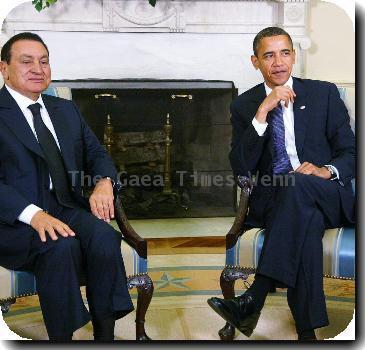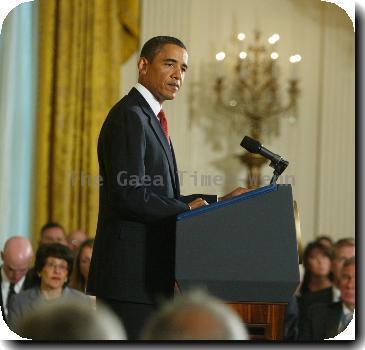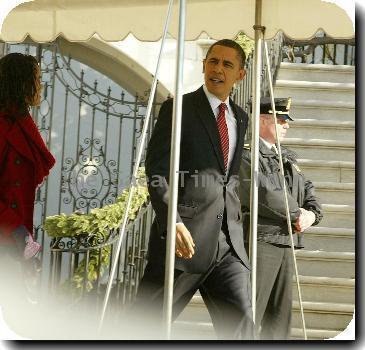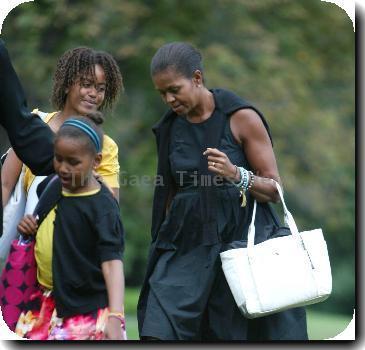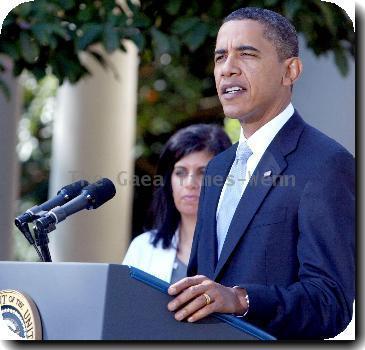UN says Taliban cause Afghan civilian deaths to soar
By Kim Gamel, APWednesday, January 13, 2010
UN: Taliban cause Afghan civilian deaths to soar
KABUL — Taliban suicide bombings and other attacks caused Afghan civilian deaths to soar last year to the highest annual level of the war, a U.N. report found Wednesday, while deaths attributed to allied troops dropped nearly 30 percent. Many Afghans now blame the violence on the Taliban rather than foreign forces.
A decline in NATO killings of civilians has become a key U.S. goal for winning over the Afghan people. Public outrage over rising death tolls prompted the top commander Gen. Stanley McChrystal last year to tighten the rules on the use of airstrikes and other weaponry if civilians are at risk.
The United Nations said 2,412 civilians were killed in 2009 — a 14 percent increase over the 2,118 who died in 2008. Nearly 70 percent of civilian deaths last year, or 1,630, were caused by the insurgents, the report found.
NATO and allied Afghan forces were responsible for 25 percent of the deaths, or 596, the U.N. said, down from 39 percent, or 828, in 2008.
The remainder could not be attributed to either side: civilians caught in the crossfire or killed by unexploded ordnance, according to the report.
More than half the civilian deaths were a result of suicide attacks and other bombings as well as assassinations and executions — despite an order last year by Taliban leader Mullah Mohammed Omar to avoid endangering noncombatants. The U.N. said Taliban attacks were mainly aimed at government or international forces but civilians can stumble into ambushes or be too close to a suicide bombing.
Afghans seen as supporting the government or the international community also were increasingly targeted.
A survey commissioned by ABC News, the BBC and ARD German TV found that 42 percent of 1,534 Afghan respondents now blame the violence on the Taliban, up from 27 percent a year ago, while 17 percent blame the U.S., NATO or the Afghan security force, down from 36 percent. The poll, conducted last month, has an error margin of plus or minus 3 percentage points.
A NATO spokesman, Col. Wayne Shanks, credited the military’s new restraint for the decline in the number of deaths blamed on pro-government forces.
“We have tried to refocus our efforts in order to protect the civilian population, the Afghan people, because we need their support in order to break the back of the insurgency,” he said.
Nevertheless, NATO airstrikes still killed 359 civilians in 2009 — 60 percent of the deaths attributed to pro-government forces and 15 percent of civilian deaths overall, according to the report.
President Hamid Karzai has frequently criticized use of airpower in populated areas, and a presidential spokesman said the best way to avoid collateral damage was to let Afghan forces take the lead in operations.
“We cannot guarantee what number the Taliban kill,” spokesman Waheed Omar said. “We can at least bring down the number of casualties that we are causing in this war, and the number of casualties that happen unintentionally by the international forces during operations.”
Regardless of which side is responsible for most of the carnage, many Afghans fear that the arrival of 37,000 new U.S. and NATO troops as part of President Barack Obama’s surge will mean more fighting — and more bloodshed — this year.
Casualties among foreign forces have also been rising over the past year. In the latest deaths, four U.S. troops and a French soldier were killed Wednesday in separate attacks, according to NATO and the French government.
“With the increase in troops, there will be more fighting and that will cause more civilian casualties,” said Mohammad Shafiq, a 28-year-old student at Kabul University. “We are very concerned … because each year the number of civilian casualties increases and there is no sign of a decrease.”
The top U.N. human rights official in Afghanistan also warned that civilian casualties were likely to rise further in 2010 as the number of U.S. and other NATO troops increase.
“The likelihood that there will be more incidents of armed conflict points to the likelihood of more civilians being harmed, more civilians being killed,” said Norah Niland, the director of the U.N.’s human rights team in Afghanistan. “There is a vital need for the surge forces to deploy in a manner that does not have an adverse impact on the civilian population.”
Kamran Bokhari, an analyst with the U.S.-based global intelligence firm Stratfor, credited the U.S.-led force with more caution than in previous years but also predicted the U.S.-led surge would result in even more casualties.
Mohammad Sharif, 25, said he feared there was no end in sight to the bloodshed.
“We have seen over the past eight years that the Taliban got stronger day by day,” he said. “I don’t think that all these foreign forces and Afghan forces will be able to defeat them in the near future.”
Associated Press writer Rahim Faiez contributed to this report.
The U.N. mission, which is in Afghanistan to support and bolster the Afghan government, compiles its figures based on reports from human rights teams that investigate casualty reports on the ground as well as figures provided by the Afghan independent human rights commission. The U.N. did not begin systematically documenting civilian casualties until 2007 — six years after the war started with the U.S.-led invasion that toppled the Taliban regime.
Some Afghan human rights activists said the actual death toll was likely higher because many deaths go unreported, especially in Taliban-controlled areas where independent investigations are difficult.
“Politicians and commanders have made many promises about protecting the population, but so far we have not seen the results,” said Mudassir Rasuli, a spokesman for Afghan NGOs Against Civilian Casualties.
Mohammad Sharif, 25, said he feared there was no end in sight to the bloodshed.
“We have seen over the past eight years that the Taliban got stronger day by day,” he said. “I don’t think that all these foreign forces and Afghan forces will be able to defeat them in the near future.”
Associated Press writer Rahim Faiez contributed to this report.
On the Net:
unama.unmissions.org/Portals/UNAMA/human%20rights/Protection%20of%20Civilian%202009%20report%20English.pdf
Tags: Afghanistan, Asia, Barack Obama, Bombings, Central Asia, Collateral Damage, Kabul, North America, Terrorism, United States, War Casualties

